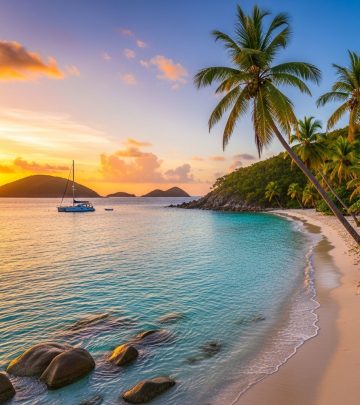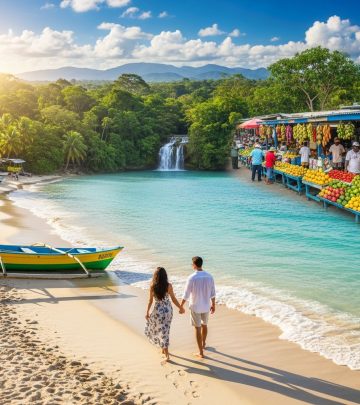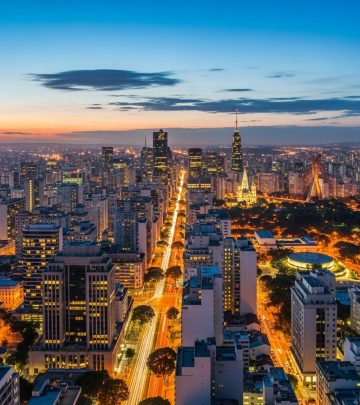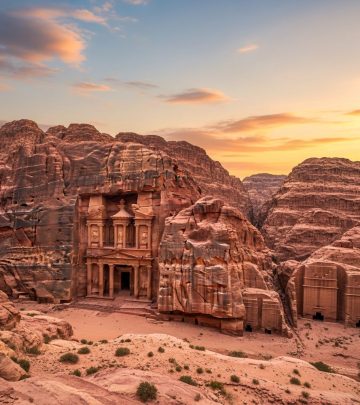The Best Florence and Tuscany Itineraries: Discovering Art, Wine, and Hill Towns
Unlock Tuscany’s artistic treasures, vineyard landscapes, and enchanting villages through expertly crafted travel itineraries.

The Best Florence and Tuscany Itineraries
Tuscany—famed for its Renaissance cities, rolling vineyards, rustic villages, and acclaimed wine—offers endless inspiration for travelers. Whether you’re drawn by world-class art in Florence, the storied streets of Siena, or the culinary delights found along winding country roads, a carefully crafted itinerary is your passport to the region’s best experiences. Below, find three comprehensive itineraries designed to showcase both the renowned sights and hidden gems of Tuscany, each easily adaptable for any taste and timeframe.
Overview: Why Explore Tuscany with an Itinerary?
Tuscany delights visitors with a seamless blend of artistic heritage, culinary excellence, and mesmerizing landscapes. With so many tempting towns and countryside escapes, planning a well-paced route is essential. The following itineraries vary in length (from 10 to 12 days) and style—from art city explorations to leisurely country road trips—ensuring there’s an ideal approach for every traveler.
- 10-Day Art Cities Itinerary: Renaissance masterpieces and medieval marvels.
- 12-Day Tuscany Road Trip: Vineyards, UNESCO sites, and farm stays.
- 10-Day Hill Towns and Wine: The best of rural Tuscany and legendary vineyards.
1. Tuscany’s Incredible Art Cities: A 10-Day Itinerary
Distance: Approx. 300 km (186 miles)
Focus: Florence, Lucca, Pisa, Siena, Arezzo, San Gimignano
This itinerary is perfect for art and history lovers keen to experience Tuscany’s most iconic cities. Explore Florence’s artistic wonders before venturing out to discover Pisa’s leaning tower, Lucca’s medieval walls, Siena’s spectacular square, and striking medieval towers in San Gimignano. Culinary detours and peaceful rural interludes round out your journey.
Florence: 3 Days
Start in Florence, Tuscany’s capital and cradle of the Renaissance. Wander through renowned galleries, churches, and lively piazzas, and indulge in the city’s vibrant aperitivo culture.
- Visit the Uffizi Gallery and admire works by Botticelli, Caravaggio, and Leonardo da Vinci.
- Marvel at the Florence Cathedral (Duomo) and climb Brunelleschi’s dome for panoramic city views.
- Stroll across the historic Ponte Vecchio bridge and explore artisan workshops.
- Dine in local trattorias and experience Florence’s bustling markets.
Detour: Take a 30-minute bus ride to Fiesole for Etruscan ruins and some of the best views over Florence.
Next Stop: Board a train from Santa Maria Novella station to Pistoia (35 minutes).
Pistoia: 1 Day
An often-overlooked gem, Pistoia charms with its intimate Romanesque center and off-the-beaten-path ambiance.
- Explore Piazza del Duomo and the striped, medieval Cattedrale di San Zeno.
- Visit the Antico Palazzo dei Vescovi and descend into historic underground tunnels for a glimpse into Pistoia’s history.
Detour: Pop over to Prato to visit Palazzo Pretorio or catch a contemporary art exhibition at Centro Pecci (17 minutes by train).
Next Stop: Take a train from Pistoia to Lucca (1 hour 20 minutes).
Lucca: 1 Day
Lucca is famous for its fully intact Renaissance city walls, which are now a pedestrian promenade.
- Cycle or walk the scenic walls of Lucca.
- Visit Piazza dell’Anfiteatro—a piazza built atop a Roman arena.
- Explore the city’s many towers, especially the Torre Guinigi with its rooftop trees.
Next Stop: Short train ride to Pisa.
Pisa: 1 Day
Pisa is known worldwide for its iconic tower, but there’s much more beyond the postcard views.
- Climb the Leaning Tower and explore Piazza dei Miracoli, home to the Duomo and Baptistery.
- Discover lesser-known sights along the Arno river, including lively squares and local markets.
Next Stop: Train south to Siena (1 hour 45 minutes).
Siena: 2 Days
Savor the medieval elegance of Siena, renowned for its magnificent Piazza del Campo and grand cathedrals.
- Stroll the sloping Piazza del Campo, focal point of the town and home to the famed Palio horse race.
- Admire the lavishly decorated Siena Cathedral and the intricate marble pavement inside.
- Visit historic museums and taste hearty Sienese cuisine at trattorias.
Next Stop: Short trip to San Gimignano.
San Gimignano: 1 Day
This UNESCO-listed hill town boasts a skyline of medieval stone towers.
- Wander the cobbled lanes and count the town’s famed towers (there were once 72).
- Savor Vernaccia white wine at local enotecas.
- Try the region’s celebrated gelato in the main square.
Are You Short on Time?
If you’re pressed for days, combine Lucca and Pisa into a single extended day trip from Florence, or eliminate secondary stops for a more streamlined (but still art-filled) itinerary.
2. A Road Trip Through Tuscany: A 12-Day Itinerary
Distance: 300 km (186 miles)
Focus: Florence, Greve in Chianti, Siena, Val d’Orcia, Montalcino, Montepulciano, Cortona
This classic Tuscan road trip slices south from Florence through the heart of wine country, past cypress-lined hills, medieval castles, UNESCO-listed towns, and idyllic farm stays. Each stop rewards you with delicious food, cultural riches, and stunning scenery.
Florence: 2 Days
Take a couple of days to immerse yourself in Florence’s treasures, allowing time to adjust before hitting the road. See tips above for city highlights.
Greve in Chianti: 2 Days
The undulating hills and vineyards of Chianti beg to be explored slowly. Settle in Greve as your base for wine tasting and rural relaxation.
- Travel along the Via Chiantigiana, the panoramic road connecting Florence with Siena.
- Stay in an agriturismo (farm stay) to experience country hospitality and local cuisine.
- Embark on wine tasting tours and sample the region’s celebrated Chianti Classico.
Detour: Pause at the fortified village of Monteriggioni, a picturesque medieval stop along the old pilgrimage route Via Francigena.
Next Stop: Drive to Siena (1 hour 20 minutes).
Siena: 2 Days
A centerpiece of Tuscan heritage, Siena dazzles with its Gothic architecture, artistic gems, and lively town spirit.
- Tour the grand Piazza del Campo and climb the Torre del Mangia for sweeping vistas.
- Delve into centuries-old art at the Duomo and Museo dell’Opera.
Next Stop: Drive to Pienza (1 hour).
Pienza: 12 Days
Nestled in the UNESCO-protected Val d’Orcia, Pienza embodies Renaissance urban planning beauty and local gastronomic pride.
- Wander the perfectly proportioned streets designed by Pope Pius II.
- Taste the town’s famed Pecorino cheese.
Detour: Visit Bagno Vignoni for its unique thermal spring pool-filled piazza and ancient spa culture.
Next Stop: Short drive to Montalcino and Montepulciano.
Montalcino & Montepulciano: 2 Days
- Montalcino: Home of the bold Brunello di Montalcino red winetour top wineries and enjoy sweeping castle views.
- Montepulciano: Renowned for its Vino Nobile red wine and steep, photogenic streets.
Consider overnighting at a vineyard or in a countryside villa surrounded by olive groves.
Cortona: 1 Day
Perched high with vistas across the Val di Chiana, Cortona is best known from the book “Under the Tuscan Sun.”
- Lose yourself in ancient lanes and small museums.
- Soak up local life at family-run trattorias and terraced cafes.
Optional Return: If you wish, close your loop by returning north to Florence, or extend into Arezzo or Umbria for a different flavor of central Italy.
3. Hill Towns and Wine: 10 Days of Rural Tuscany
Distance: Flexible loop
Focus: Volterra, San Gimignano, Colle di Val d’Elsa, Chianti, Cortona, rural estates
This route spotlights Tuscany’s spectacular hill towns, rustic farm stays, and the region’s legendary wine culture. Perfect for travelers who want to combine scenery, local life, and relaxed adventures.
Volterra: 2 Days
- Walk Etruscan city walls and admire alabaster artisan shops.
- Tour the starkly beautiful Piazza dei Priori and Roman Theater ruins.
San Gimignano: 1 Day
- Climb medieval towers for breathtaking views.
- Savor locally made gelato and Vernaccia wine.
Colle di Val d’Elsa: 1 Day
- Discover this lesser-known gem’s upper and lower towns connected by a panoramic elevator.
- Tour artisan crystal workshops.
Chianti Region: 2 Days
- Base yourself in a countryside agriturismo to explore villages like Radda, Castellina, and Gaiole in Chianti.
- Sample Chianti Classico wines and taste hand-rolled pasta in local kitchens.
Cortona: 1 Day
- Visit the Diocesan Museum and enjoy the town’s luminous hilltop setting.
- Wander olive groves and fields that inspired “Under the Tuscan Sun.”
Extra Rural Extensions
- Add time at wellness spas or thermal baths like those at Bagno Vignoni or Rapolano Terme.
- Extend your wine tastings across Maremma for Super Tuscan reds.
Travel Tips for a Seamless Tuscan Journey
- Best Time to Visit: Late spring (May–June) and early autumn (September–October) offer mild weather and fewer crowds.
- Transport: Cities are best accessed by train, while small towns and rural areas are reached by car.
- Reservations: Book tickets for key museums and restaurants in advance, especially in high season.
- Accommodation: Mix urban hotels with countryside villa or farm stays for variety and local charm.
- Experiences: Schedule ample time for unplanned stops—village markets and festivals often provide highlight moments.
Table: Quick Itinerary Comparison
| Itinerary | Length | Main Focus | Best For |
|---|---|---|---|
| Art Cities | 10 days | Florence, Pisa, Siena, San Gimignano, Arezzo, Lucca | Lovers of art and history |
| Road Trip | 12 days | Chianti, Val d’Orcia, Cortona, rural escapes | Wine and scenery enthusiasts |
| Hill Towns | 10 days | Volterra, Chianti villages, Colle di Val d’Elsa | Rural discovery and local life |
Frequently Asked Questions (FAQs)
What is the best way to get around Tuscany?
Major cities like Florence, Pisa, and Siena are easily accessible by train, but for small towns and the countryside, renting a car provides maximum flexibility for spontaneous exploration and scenic routes.
How many days do I need to explore Tuscany?
A minimum of 7 to 10 days allows for a fulfilling overview. Stretching your trip to 12 days or longer enables a deeper dive into rural towns and wine regions.
When is the best time to visit Tuscany?
Late spring (May–June) and early autumn (September–October) provide sunny days, pleasant temperatures, and thinner crowds compared to busy summer months.
Are the itineraries suitable for families?
Yes, these routes offer activities and settings that appeal to families, including outdoor experiences, small towns, farm stays, and plenty of kid-friendly Italian cuisine.
Can I combine these itineraries?
Absolutely! The itineraries are designed to be flexible and can be merged or split, depending on your pace, interests, and how much time you have in Tuscany.
Final Travel Insights
- Traveling off the main highways leads to charming villages and hidden vistas—don’t be afraid to get a little lost.
- Enjoy slow travel: sit in a piazza, savor local food, and allow Tuscan rhythms to guide your journey.
- Many regional festivals, particularly in summer and autumn, offer unique windows into local traditions.
- Tuscan cuisine goes beyond pasta—sample wild boar, ribollita soup, pecorino cheese, and of course, gelato in every town.












